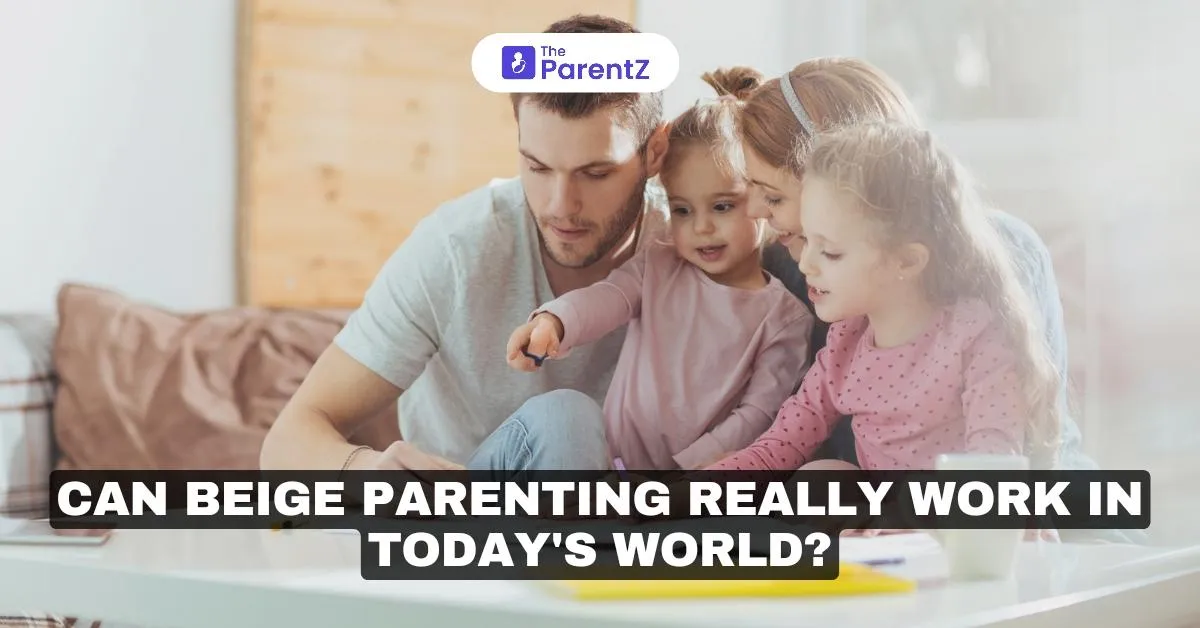Let's talk about the latest parenting trend that's taking over social media feeds everywhere—beige parenting. If you've been seeing those aesthetic Instagram posts with kids in neutral tones playing with wooden toys and wondering what the hype is all about, you're not alone. Let's dive deep into this minimalist parenting approach and figure out if it's actually sustainable in our chaotic, colorful world.
Understanding Beige Parenting
Beige parenting is characterized by a focus on neutral colors and minimalism in children's environments. This includes everything from nursery decor to clothing and toys. The aesthetic is often associated with influencers who promote a serene, uncluttered lifestyle that reflects their values of simplicity and sustainability. Basically, it's the parenting equivalent of that peaceful, minimal Instagram feed you've been envying. However, beneath this calm exterior lies a complex interplay of benefits and drawbacks.
The Pros of Beige Parenting: The Good Vibes!
Simplicity: One of the most significant advantages of beige parenting is its emphasis on simplicity. A minimalist approach can reduce clutter in both physical space and mental load for parents. With fewer distractions, you can focus more on quality time together rather than being overwhelmed by choices.
- Aesthetic Appeal: For many parents, the neutral palette is visually pleasing and creates a sense of calm in the home. It aligns with current design trends that favor clean lines and understated elegance.
- Potential for Mindfulness: Beige parenting encourages mindfulness in consumer choices. Parents who adopt this style often prioritize sustainable products and thoughtful purchases over mass-produced items, which can lead to more environmentally conscious living.
- Flexibility: A neutral color scheme allows for easy updates as children grow. Parents can change accessories or artwork without needing to repaint or overhaul entire rooms.
- Environmental Benefits: Less plastic, more sustainable choices. When you're focused on quality over quantity, you naturally reduce your environmental impact.
The Cons of Beige Parenting: The Not-So-Good Vibes!
- Lack of Stimulation: Critics argue that beige parenting may deprive children of necessary visual stimulation. Bright colors are essential for infants' cognitive development; they help babies distinguish between objects and engage their curiosity about the world around them. If children are surrounded by muted tones, they might miss out on important sensory experiences that promote learning.
- Social Pressure: The rise of beige parenting has created a culture where parents feel pressured to conform to this aesthetic. This may lead to feelings of inadequacy for those who cannot afford high-end neutral products or who prefer more vibrant styles for their children.
- Accessibility Issues: Many products associated with the beige aesthetic come with a hefty price tag, making them less accessible to families on tighter budgets. This exclusivity can foster feelings of guilt or shame among parents who feel they cannot provide the same environment for their children.
- Superficial Values: There’s a risk that beige parenting promotes a superficial approach to child-rearing, where aesthetics take precedence over developmental needs. This may lead to parents prioritizing style over substance in their children's upbringing.
The Role of Social Media
Let's talk about the elephant in the room—social media has turned beige parenting into a whole aesthetic movement. Platforms like Instagram and TikTok showcase beautifully curated homes filled with neutral tones, influencing countless parents to adopt similar aesthetics. However, this constant exposure can create unrealistic expectations about what parenting should look like.
Impact on Children
The implications of beige parenting extend beyond aesthetics; they can significantly affect children's development:
- Visual Development: As mentioned earlier, infants require bright colors for optimal visual development. A lack of stimulating colors may hinder their ability to perceive contrast and develop visual acuity.
- Emotional Well-Being: Children thrive in environments that encourage exploration and creativity. A sterile environment devoid of color may limit their opportunities for imaginative play and self-expression.
- Identity Formation: As children grow older, they develop preferences and tastes that reflect their individuality. If they are raised in an environment that suppresses these preferences in favor of a singular aesthetic, it could impact their sense of self.
Making It Work (Without Losing Your Mind)
For parents interested in adopting beige parenting principles while ensuring their children's needs are met, here are some tips:
- Balance Aesthetics with Functionality: While you may love the look of neutral decor, ensure that your child's toys and books are colorful and engaging. Incorporate bright elements into play areas to stimulate curiosity.
- Encourage Exploration: Take your child outside frequently where they can experience vibrant colors in nature—flowers, trees, animals—everything that stimulates their senses beyond the beige walls at home.
- Be Mindful About Purchases: Focus on quality over quantity when buying toys or decor items. Look for sustainable options that align with your values without compromising your child's developmental needs.
- Involve Your Child: As your child grows, involve them in decorating decisions or allow them to express their preferences through art or decorations in shared spaces.
- Limit Social Media Influence: Be aware of how social media impacts your perception of parenting norms. Curate your feed to include diverse representations of parenting styles that resonate with you rather than just the beige aesthetic.
Conclusion
Beige parenting, like any parenting style, isn't about following a strict rulebook. It's about taking the principles that work for your family and leaving the rest. Maybe your version includes a few bright toys or colorful art displays—and that's totally okay!
Remember, the goal isn't to create a perfect Instagram feed; it's to raise happy, healthy kids in a way that feels authentic to your family. If that means your "beige" life has a few splashes of rainbow, embrace it! After all, real life is lived in full color, even if we sometimes filter it in neutral tones.
Keep it real, stay true to your family's needs, and don't let social media pressure you into a box that doesn't fit. You've got this!








Be the first one to comment on this story.